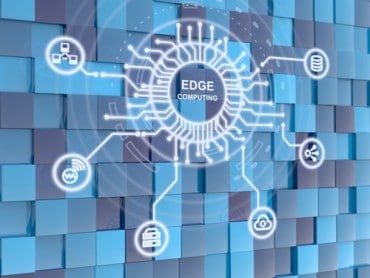
Today, Apache Kafka is a widely used technology, with applications ranging from real-time data processing to stream processing, event sourcing, and messaging across various technical domains, including finance, healthcare, social media, and e-commerce.
When it comes to handling real-time data at scale, few technologies have made as significant an impact as Apache Kafka. Originally conceived as a solution to LinkedIn’s data processing challenges, Kafka has evolved into a global messaging API and protocol standard, powering some of the world’s most data-intensive applications. In this article, we will embark on a technical journey through the evolution of Kafka, from its humble beginnings to its current status as an integral part of the data architecture in organizations worldwide.
Origins at LinkedIn
Real-time streaming has become an essential requirement for many businesses. One of the key technologies driving this trend is Apache Kafka, an open-source distributed messaging system originally developed at LinkedIn (2011). But Kafka has evolved beyond its early use, becoming the de facto standard in the last decade for real-time data streaming. Its adoption is widespread across nearly every industry and for many, many use cases.
How did this happen? Let’s take a closer look at how Kafka became the backbone of real-time processing.
Why was Kafka created?
At LinkedIn, the messaging systems couldn’t meet the needs of the growing business use cases. These systems were slow, had limited throughput, and just weren’t designed to handle the real-time data feeds. LinkedIn’s engineering team addressed these limitations by creating a new messaging system able to handle high volumes of real-time data feeds and, crucially, scale horizontally.
The team identified three requirements for the new system:
- Can it handle high data volumes? With the immense growth of social networking in 2011 and user-generated content on LinkedIn, the need for a system to keep up was evident. LinkedIn needed a big win to help drive growth.
- Does it offer low latency and high throughput? Real-time Interactions and data processing demanded low-latency messaging with high throughput. Traditional messaging systems couldn’t deliver this capability.
- Will it scale? LinkedIn’s user base was expanding, so the messaging system needed to accommodate increasing data loads.
The development of Kafka began at LinkedIn in 2010. The co-founders envisioned a system that could meet LinkedIn’s needs through building a real-time infrastructure. Jay Kreps, Neha Narkhede, and June Rao embarked on the mission of creating this new messaging system. They began with a simple prototype capable of handling a few thousand messages per second but soon were able to scale.
In 2011, Kafka was deployed into production at LinkedIn, rapidly becoming the backbone of the company’s real-time infrastructure. The system demonstrated its ability to handle billions of messages daily, providing the low latency and high throughput required for real-time processing. Kafka’s scalability allowed LinkedIn to seamlessly add more nodes to the cluster as the business grew.
Open sourcing and Apache incubation
In 2012, Kafka took a significant step forward with the Apache Software Foundation. The move to open source marked the beginning of Kafka’s journey beyond LinkedIn and into the broader technical community.
The open-sourcing of Kafka had several technical implications:
- Wider Accessibility: Kafka was no longer LinkedIn’s proprietary solution. It became accessible to the broader technical community, fostering innovation and encouraging contributions from diverse sources.
- Community-Driven Development: As Kafka became an Apache project, it embraced a governance model that encouraged community participation. This enriched Kafka’s technical capabilities and ensured its adaptability to various specialized use cases.
Today, Kafka is a widely used technology, with applications ranging from real-time data processing to stream processing, event sourcing, and messaging across various technical domains, including finance, healthcare, social media, and e-commerce.
See also: 7 Surprises Running Kafka in Production (and How to Prepare for Them)
Key technical concepts in Apache Kafka
To appreciate Kafka’s journey, let’s go over the building blocks of its core capabilities. This is the heart of what makes it such a versatile platform and, consequently, so ubiquitous.
Publish-Subscribe Messaging and its implementation: event streaming
Apache Kafka utilizes the publish-subscribe messaging pattern, facilitating the transmission of messages from senders (publishers) to multiple receivers (subscribers) through topics. Topics permit multiple subscribers to receive all messages published to them, ensuring rapid, pull-based message delivery.
Event streaming, inherent to Kafka, extends this pattern by enabling not only the publication and subscription but also the storage and real-time processing of events. Events represent state changes in a system, making Kafka ideal for scenarios like payment processing, where it manages continuous streams of real-time transaction data. Kafka’s event streaming capabilities elevate it beyond traditional publish-subscribe messaging systems, enhancing data handling and analysis.
Topics and partitions
In Kafka’s technical architecture, topics and partitions are fundamental concepts crucial for managing data streams.
A Kafka topic serves as a digital container, categorizing messages under specific feed names. Producers write data to topics while consumers read and process it. For example, topics like “Stock Prices” or “Market News” organize relevant data streams in finance.
Partitions divide topics into manageable units, enabling parallel processing. They’re like individual channels within a topic. Partitions can be customized in number, adapting to specific use cases. Kafka clusters distribute these partitions across servers for redundancy and fault tolerance. A unique technical feature is routing messages based on keys, ensuring that messages with the same key go to the same partition. This allows multiple users to read from a topic concurrently while maintaining data integrity.
In essence, Kafka’s topics and partitions are the backbone of its technical architecture. They enable scalable, fault-tolerant, parallel processing of real-time data streams. This foundation empowers Kafka to handle vast data volumes with low latency and high throughput, making it ideal for diverse technical use cases in modern data processing.
Brokers and clusters
In Kafka’s architecture, brokers are pivotal components responsible for storing and serving data. These servers, or nodes, within a Kafka cluster, handle various technical aspects:
A Kafka broker serves as a node in the Kafka cluster, facilitating data storage and retrieval. When producers send data to Kafka topics, brokers receive and store this data. Moreover, brokers collaborate to ensure data replication and fault tolerance, with data replicated across multiple brokers to prevent data loss in the event of failures. Additionally, brokers manage data distribution to consumers, ensuring equitable access to data from partitions.
A cluster is basically a collection of brokers.
Producers and consumers
Producers and consumers are central actors in Kafka’s technical ecosystem, each with distinct technical roles.
Producers are applications or components responsible for publishing data to Kafka topics. They create records (messages) and transmit them to Kafka topics, representing a wide range of data, from log entries to sensor readings and financial transactions. Producers play a crucial technical role in populating topics with real-time data.
Conversely, consumers are applications or components that subscribe to Kafka topics and retrieve data from them. Consumers process records from Kafka topics, enabling real-time data analytics, reporting, and various other technical use cases. Kafka’s technical design supports multiple consumers simultaneously subscribing to the same topic, allowing for parallel data processing and distribution.
In subsequent articles, we will explore the technical evolution of Kafka’s architecture, protocol enhancements, security features, and its roadmap for the future, solidifying Kafka’s position as a technical powerhouse in the realm of distributed messaging and data processing.




























